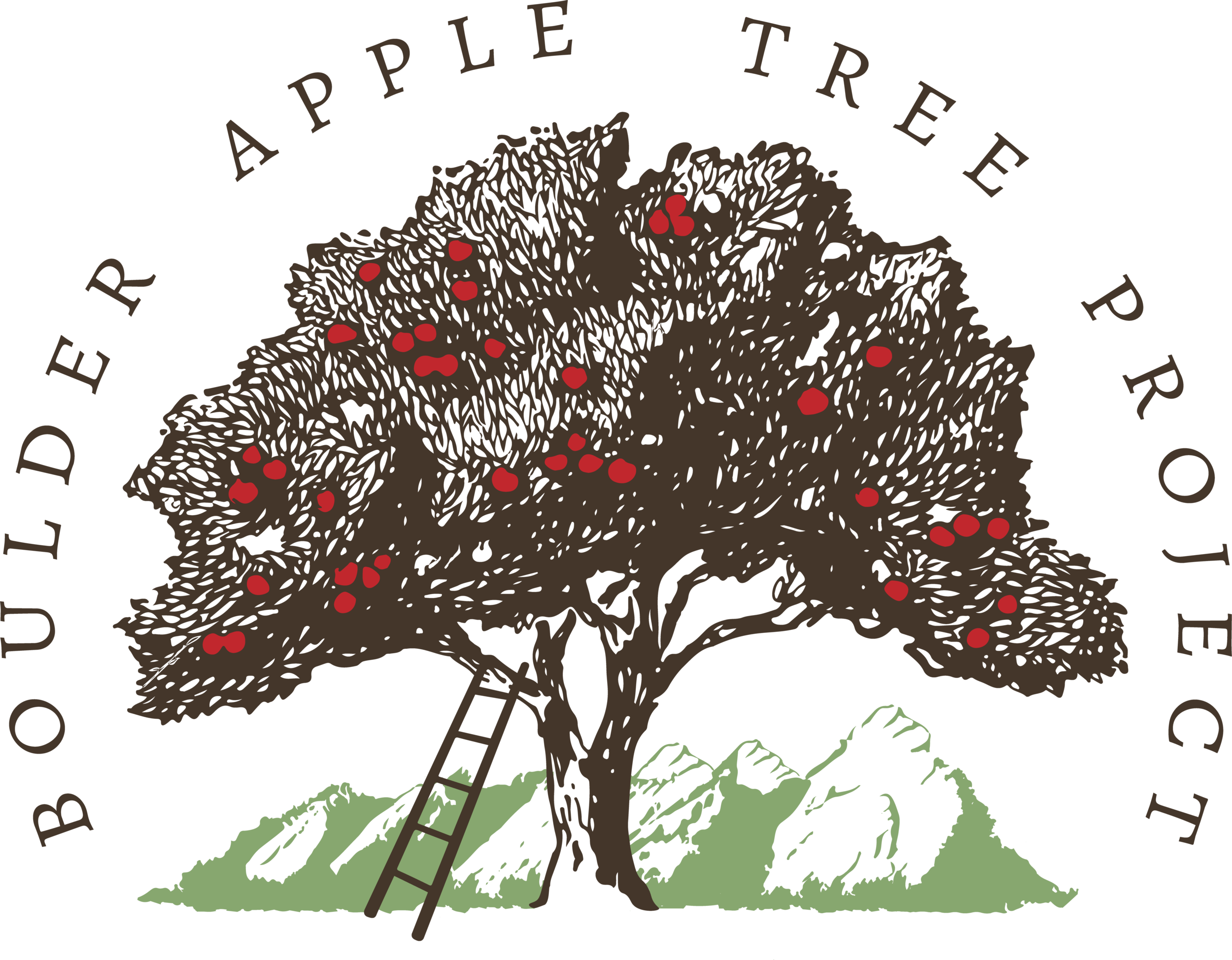Student Reflections of the AppleBlitz
Dr. Corwin demonstrating how to photograph cross sections of an apple. Photo courtesy of Dr. Kika Tuff of Impact Media Lab.
We are still busily collecting data on apple trees that the community has been generous in reporting. With favorable weather conditions we are hoping to visit at least 15 more sites this semester. The Apple Tree Project was also featured in a story in the Left Hand Valley Courier!
Throughout the semester we will be highlighting student reflections from their participation in a Service Learning Activity (AppleBlitz, community cider pressing, Community Fruit Rescue Harvests) for EBIO 1250. Our first comes from a student named Grace who participated in the Apple Blitz.
Here is a quaint garden under a local Boulder resident’s gorgeous apple tree.
The Boulder Apple Tree Project hosted an Apple Blitz on the morning of Saturday, September 25th, an event in which dozens of CU students, staff, and members of the community joined to gather research data to support the BATP’s goal of uncovering the history of apple trees in our area. Several groups were asked to measure and collect information for apple trees and their fruit across the Boulder area. I worked as a team leader with a classmate from my EBIO 1250 class alongside a graduate student and two members from the local area. My team and I went to three houses near the Columbia Cemetery to measure and investigate five apple trees in total. We did basic things such as measuring their canopy length and diameter breast height, but we also tagged trees for the BATP and discovered how apples from trees merely feet apart have completely different tastes, structures, and backstories. For example, apples from a healthier tree tasted much sweeter than apples from a tree heavily infected with fire blight despite being in the same backyard with the same living conditions. Fire blight, according to Colorado State University, is a bacterial infection that is detrimental to fruit trees because it kills and infects branches and leaves of its host. Because of the Apple Blitz, I was able to take what we had learned about apple trees and fireblight in the classroom and apply it to genuine real-world scenarios.
Personally, I am not a morning person, so I was a bit hesitant to wake up at 7am to gather data for apple trees. However, all of my doubts about the Apple Blitz went away almost immediately - I loved working with people that I normally would never have met and getting to know their backgrounds over brief apple-eating breaks. I learned how incredible it is to collaborate with people who are so passionate about their work; I learned that there are people who have interests in everything - no matter how niche it may be. I know I am not the only one who feels this way; my teammates and other Boulder citizens were equally as excited to ask questions about the BATP, our process, and how they could get involved. I truly think the Apple Blitz was a great, effective, and informative way to get everyone involved - from EBIO students to random civilians. I know that this project allowed me to see fruit trees in a much more personable light, meaning whenever I come across an apple tree in my free time I actually stop to analyze it, which is something that I never would have even thought about before taking this class and participating in the Apple Blitz. Additionally, this event was great practice for whenever my class goes out into the field because I feel much more confident in my ability to gather research on the apple trees we are surveying. So, in the end, I would happily participate in the Apple Blitz again - there were very few, if any, things that I thought could be improved. It was a very enjoyable experience overall.


